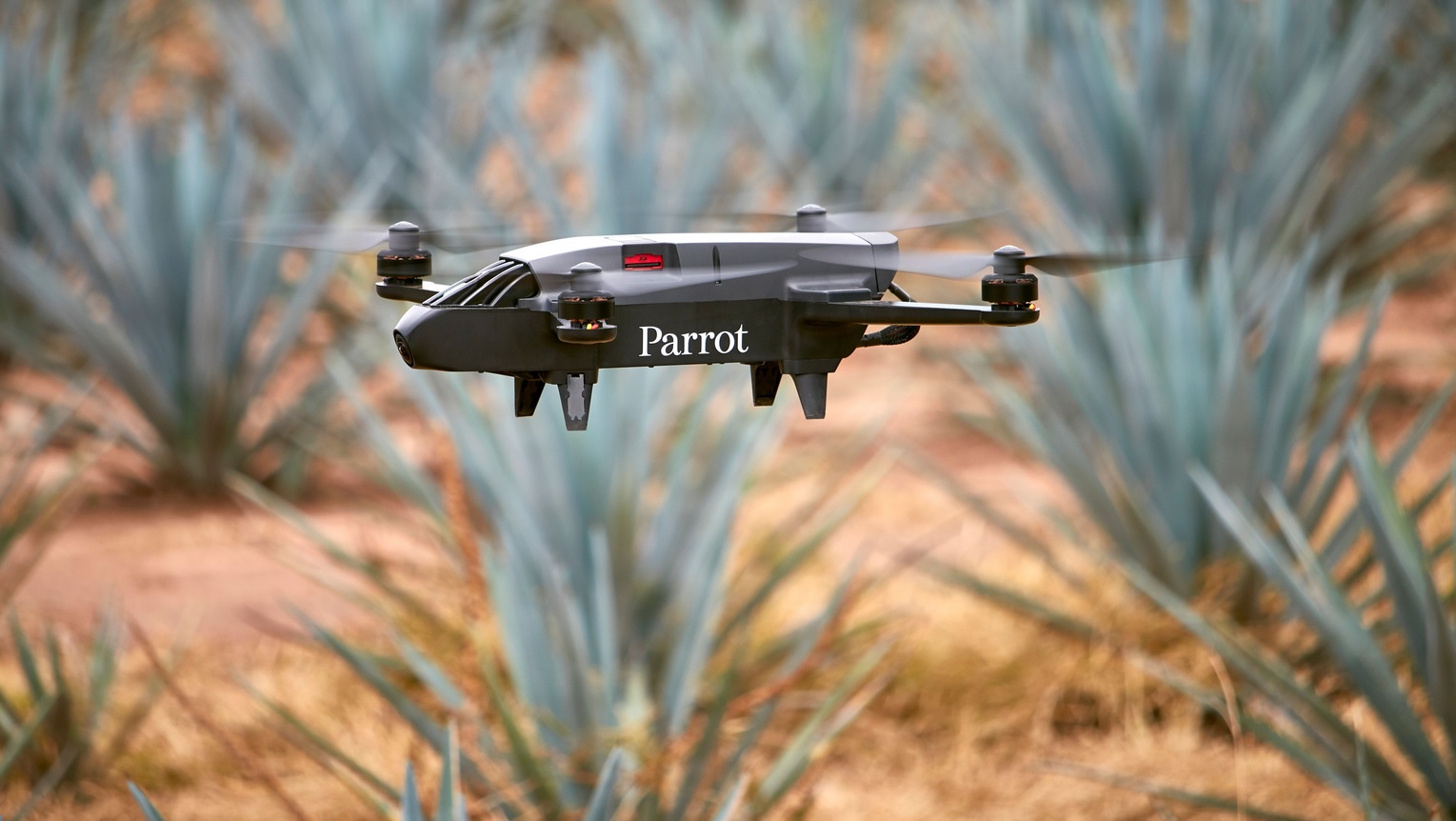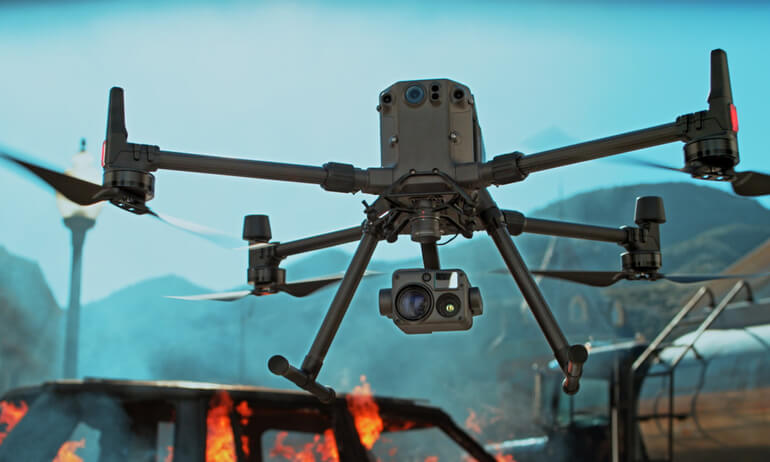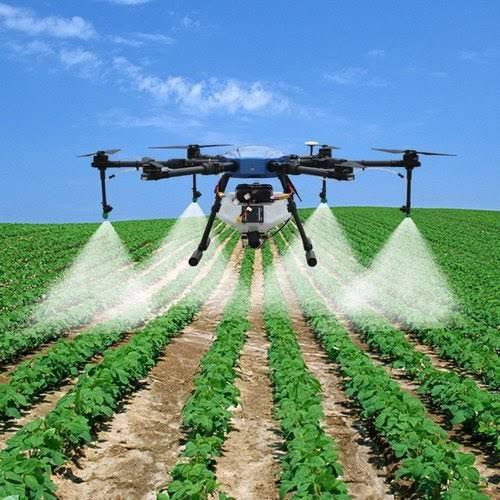
Top 5 best drones for modern farm
Description:Stepping into the future of farming methods, agricultural drones are becoming an increasingly popular choice among farmers in modern society. These flying, farming mavens combine cutting edge technology with traditional farming methods to embark on a new era of precision agriculture. This profound movement in farming has unleashed a new paradigm that has brought significant alterations and improvements in areas such as crop surveillance, irrigation, soil and field analysis, planting, and livestock monitoring. Intertwining technology with the essence of agriculture, these drones are enhancing productivity, managing resources, and improving crop yield like never before. Not only do these drones provide an efficient and cost-effective alternative for farmers, but they also shed light on the laws, regulations, and ethical considerations surrounding this advanced farming method.
Understanding Agricultural Drones
Agricultural drones, also known as agri-drones, are unmanned aerial vehicles (UAVs) used extensively in farming and agriculture. They perform various tasks, from surveying and examining farmland to spraying and planting crops. These remote-controlled or self-piloted machines greatly assist in streamlining agricultural processes, thereby boosting productivity and reducing manual labour.Different Types of Agricultural Drones
Agricultural drones come in various types, predominantly fixed-wing drones and multi-rotor drones. Fixed-wing drones are generally used for mapping and monitoring expansive agricultural areas. They cover substantial distances and can stay in the air for longer periods. In contrast, multi-rotor drones, with their maneuverability and hovering ability, are ideal for precise tasks, such as crop spraying and soil analysis.
Some agricultural drones are equipped with infrared or hyper spectral cameras that allow farmers to monitor the growth and health of crops. Some drones can even spot diseases way before they become visible to the human eye.
Design and Operation of Agricultural Drones
Agricultural drones are designed with advanced technology to withstand varying weather conditions and handle different terrains. Equipped with GPS systems, they're capable of automated and accurate flights over farmlands providing real-time data. In addition, they are made lightweight to allow for efficient deployment and longer flight times.
Their operation involves pre-flight checks, mission planning, and post-flight analysis. During the pre-flight check, the operator ensures the drone is in perfect working condition. The mission planning phase involves inputting flight parameters like altitude and speed. Furthermore, farmers use the insights gathered from the post-flight analysis to plan their upcoming farming activities.
The Technological Leap: Shaping the New Age of Farming
The emergence of agricultural drones marks a considerable leap in farming techniques, reshaping it into what is now known as precision agriculture. With these drones, farms can be inspected thoroughly in a fraction of the time it'd take manually. Moreover, they can apply fertilizers, pesticides, and herbicides with remarkable exactness, limiting the possibility of oversupply and unnecessary wastage.
The escalating trend of integrating digitization into farming via drones has distinct advantages such as improved weather forecasting, precise evaluation of crop health, and efficient management of large-scale farms. By delivering high-quality aerial images and vital statistical data, drones have emerged as influential aid in agricultural decision-making processes.
Agricultural drones also decrease the necessity for human intervention in dangerous or labor-intensive tasks, effectively cutting down labour expenses. With their anticipated future growth in use, these drones are poised to reshape farming practices radically. In essence, they are central to increasing the effectiveness and productivity of the agriculture industry, aiding in the global necessity of meeting the ever-increasing food demand.
Understanding Agricultural Drones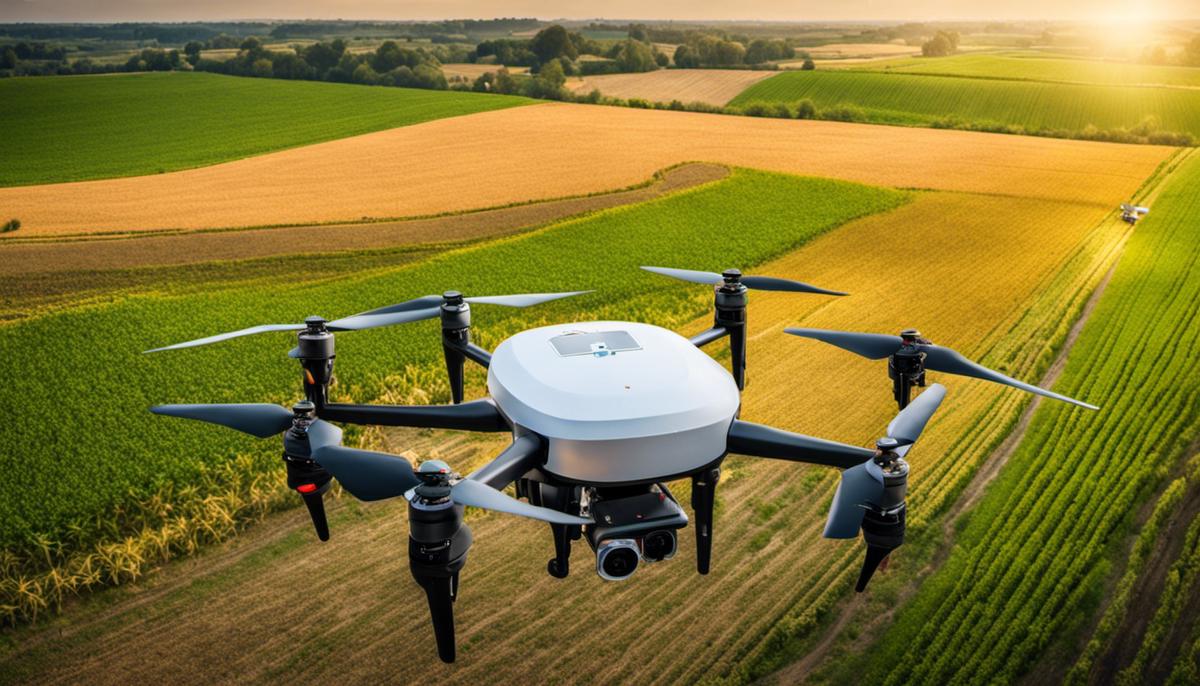
Applications of Drones in Agriculture
The Emerging Role of Drones in Agricultural Tasks
One of the standout roles of drones in agriculture is their use in crop monitoring. High-grade drones, when furnished with cutting-edge sensors, can evaluate crop health and detect any bacterial or fungal infections. By providing an expansive aerial view of the fields, these drones simplify the task of crop surveillance, quickly detecting problematic areas and enabling proactive treatment before the issue spreads. This not only economizes time but also reduces the consumption of water and other inputs needed.
Drones have also revamped the irrigation methods used in farming. Agricultural drones configured with hyperspectral, multispectral, or thermal sensors can determine which sections of a field are moisture-deficient or need improvements. They efficiently conserve water resources by indicating specific areas that require water. In addition, they display thermographic mappings of the field, supporting irrigation planning to diminish water waste and boost crop yield.
Drone Usage in Soil and Field Analysis
A vital part of the agricultural process is gathering accurate data about the soil health and field conditions for planting. Drones with sophisticated technology can produce precise 3D maps for soil analysis, helping determine seed planting patterns. This early stage analysis is critical in predicting future crop yield. Moreover, drones offer a faster and more efficient alternative to manual soil sampling by covering large areas in shorter times and providing real-time data on soil conditions.
Planting and Livestock Monitoring with Drones
Sowing seeds using drones are another innovative application of this technology in agriculture. Drones can decrease planting costs significantly as they are used to shoot seed pods into the ground. Deploying drones can lead to an increase in the speed of planting by up to 75 percent, leading to significant cost and time efficiencies.
Livestock monitoring is another area where drones have seen considerable application. In vast farms and rugged terrain, keeping an eye on wandering livestock can be a challenging task. Drones can aid farmers by keeping track of livestock movements, identifying signs of disease or distress, and even assisting in herd management.
The Potential of Agricultural Drones
Elevating the traditional farming methods to new heights, the innovative use of drones in the agricultural sector brings numerous advantages. Equipped with high-resolution cameras and advanced sensors, these drones provide data of high precision and accuracy, outperforming conventional methods. Functions like soil testing, crop inspection, and livestock monitoring can now be carried out in significantly less time. Drones provide insightful information about the crop health and irrigation needs, subsequently minimizing waste of water and resources and ultimately, leading to cost-efficiency. Also, with their autonomous operations, drones successfully diminish the need for extensive human labor, cutting down related expenses.
The beneficial influence of drones extends to increased crop production as well. The timely information they supply about crop health and soil conditions enables farmers to take necessary actions and adjust their cultivation practices accordingly. This modern, technology-driven way of farming not just amplifies productivity but also supports sustainable farming methods.
Impact of Drones on Farming Efficiency
How Drones Facilitate Yield Improvement
Often referred to as unmanned aerial vehicles (UAVs), agricultural drones have brought a dynamic revolution to the farming sector, significantly improving crop yield. With the help of advanced sensors and great imaging prowess, drones offer new methodologies to farmers for increasing yield while minimizing crop damage. As drones scan the terrain and record images with unparalleled details, farmers can process these images to identify areas needing attention. This consequently allows them to swiftly identify and deal with issues like irrigation troubles, soil variation, and pest or fungal infestations. By swiftly addressing these problems, farmers can substantially improve their crop yield and productivity.
Reducing Labor Costs through Drones
Labor cost is one of the most significant elements of agricultural expenses. By integrating drone technology, farmers can achieve considerable labor cost savings. Drones can cover large areas in a minimal time frame, performing tasks like soil and field analysis, planting, crop spraying, and monitoring. This reduces the need for manual labor, significantly decreasing labor costs. Agricultural drones can operate continuously, unaffected by tough terrains, weather conditions, and can work outside of typical working hours, ensuring tasks are completed promptly with higher accuracy.
Enhancing Resource Management via Drones
The efficiency of resource management in farming is exceptionally crucial, especially in relation to water and fertilizers. Here, the role of drones becomes pivotal. They enable farmers to monitor and manage resources more efficiently. With multispectral imaging, drones can identify areas that are dry or need more nutrients. Based on this data, farmers can ensure precise irrigation and fertilizer application. This precision reduces waste, saves resources, and leads to more robust and healthy crop growth.
Case Studies: Drones in Agriculture
Many real-life case studies demonstrate the success of drones in agriculture. For instance, Bowles Farming Company in California used drones equipped with infrared cameras to manage its 2,400-acre farm. This helped identify plants under stress weeks earlier than traditional methods, giving them a chance to address the issue and increase the yield.
Another significant example is from Brazil, where drone technology was employed to fight the whitefly pest infestation in soy fields. The drones sprayed pesticides more precisely, reducing the pesticide use by approximately 20%, which saved cost and reduced environmental impact.
Precise and Efficient Farming with Drones
Precision agriculture refers to the way farmers manage crops to ensure efficiency of inputs such as water and fertilizer, and to maximize productivity, quality, and yield. The advent of drones in the agricultural sphere has catapulted this precision to new heights. With drones, farmers can create crop maps, track livestock, monitor crop health, assess plant count and yield prediction, and far more with supreme accuracy and timeliness.
Managing Large Tracts of Land
Managing large expanses of agricultural land can be a daunting task. Here, drones come as a boon to farmers. Drones can easily cover vast areas and gather data rapidly compared to ground-based methods. Helpful in crop monitoring, they can provide a detailed map of the field, allowing for careful monitoring and management of fields.
To summarize, the implementation of agricultural drones is proving to be a game-changer in the industry. This technology combines the benefits of efficiency, cost-effectiveness, and enhancement of productivity in farming practices. The utilization of these advanced machines has provided farmers with cutting-edge tools to boost their crop yield, manage their expansive lands, and drastically reduce resource consumption.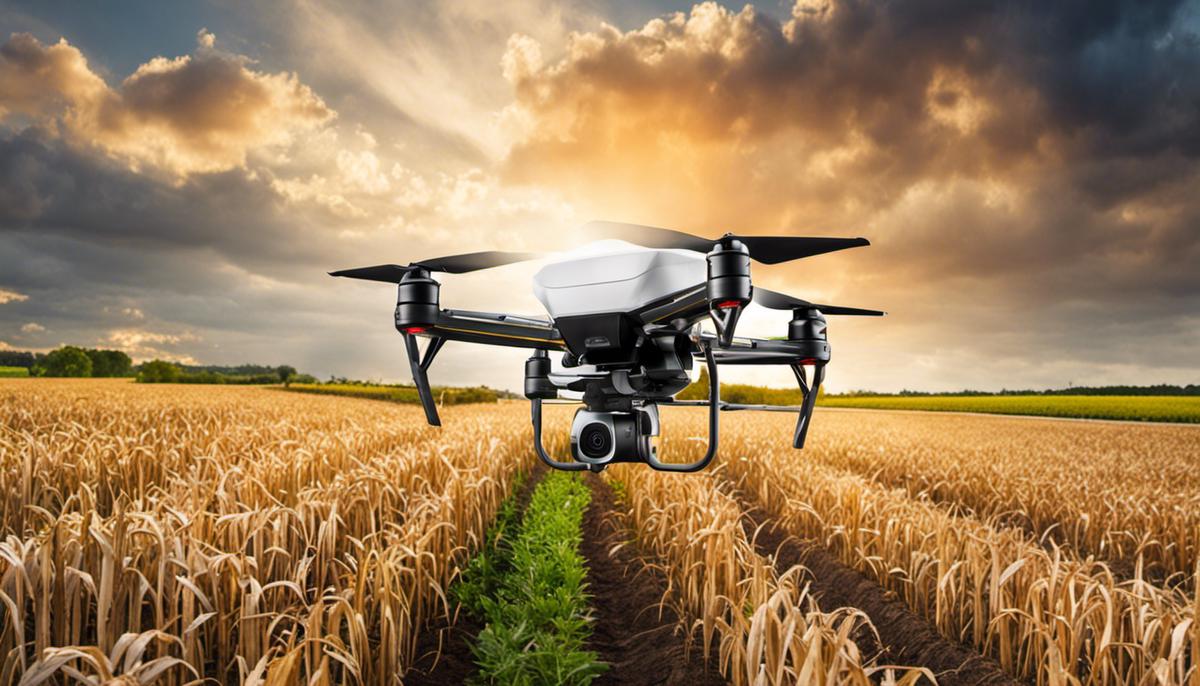
Regulations and Ethics of Using Agricultural Drones
Understanding the Legal Framework and Rules Governing Agricultural Drones
In the context of the United States, the operation of drones, including those used for agricultural purposes, is regulated by the Federal Aviation Administration (FAA). The FAA classifies rules for Unmanned Aircraft Systems (UAS), popularly known as drones, under two significant categories: guidelines for personal or hobby usage, and rules intended for commercial endeavors. It's important to note that drones used in agriculture are considered part of the commercial category.
Drone Operations Rule (Part 107)
The basic framework for legal agricultural drone operations in the United States is based on the FAA's Part 107 regulations. According to these rules, commercial drone operators must obtain a Remote Pilot Certificate, pass an aeronautical knowledge test, and be vetted by the Transportation Security Administration. The drone should weigh less than 55 pounds and be operated during daylight hours or twilight (30 minutes before official sunrise to 30 minutes after official sunset, local time) with appropriate anti-collision lighting.
Agricultural Usage and Permissions
In agriculture, drones can greatly enhance productivity by helping farmers with tasks such as crop surveillance, pest control, and irrigation. Their efficiency can lead to increased crop yields and reduce waste from overuse of resources. However, to use drones for these commercial purposes, farmers must get FAA approval. Certain operations, such as operating from a moving vehicle or aircraft, or nighttime operations, require a waiver from the FAA.
Privacy Concerns and Ethical Considerations
Using drones in agriculture has opened discussions about privacy issues. Primarily, these concerns revolve around data and images gathered by drones that might include footage from private properties adjacent to agricultural land. In response to these concerns, the FAA launched the Drone Advisory Committee in 2016 to address the integration of drones into the National Airspace System (NAS), which includes addressing privacy issues and providing guidelines regarding privacy best practices for users of unmanned aircraft.
Government Regulation and State Laws
In addition to FAA regulations, each state has the authority to enact legislation regarding drone usage within their jurisdiction. For example, some states, such as Texas and Florida, have passed laws restricting drone use to protect privacy. At the same time, the FAA maintains that the federal government holds exclusive sovereignty over the airspace of the United States. The matter continues to be a contentious issue between state and federal governments.
To effectively operate an agricultural drone, it is vital for farmers and drone users to be familiar with the governing rules. This not only includes an understanding of federal standards and guidelines but also demands a comprehensive knowledge of the particular legislation of the state where the drones will be flown.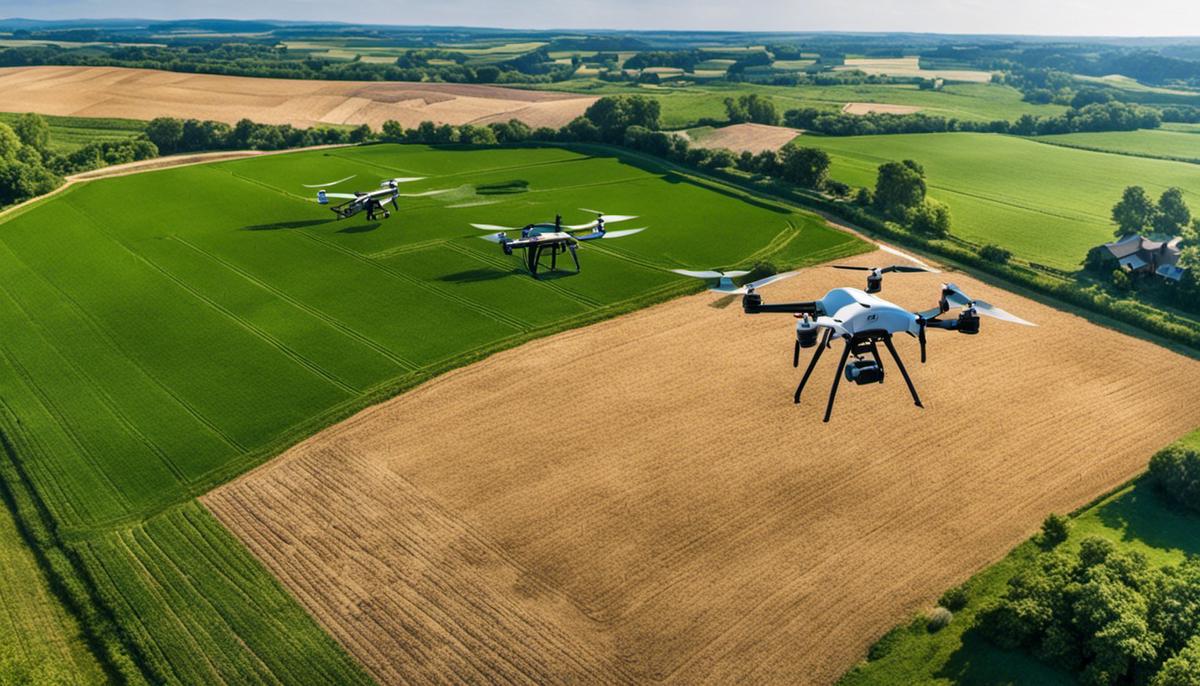
Future of Drones in Agriculture
How Drones are Revolutionizing the Agricultural Sector
Drones have carved out a crucial space for themselves in modern farming. They have a plethora of applications ranging from surveying the land and analyzing soil to planting crops, dispensing fertilizers, and keeping track of livestock. Their ability to provide a bird’s-eye view of the field, which would be otherwise hard or costly to obtain, has become indispensable to today’s farmers. These drones are furnished with advanced sensors and cameras which can collect comprehensive field data and transmit it for further analysis. They can also detect field irregularities which could be overlooked by the human eye thereby aiding in the early detection of potential pest attacks or disease outbreaks that can damage crops.
Future Applications of Agricultural Drones
Advancements in drone technology combined with the power of artificial intelligence (AI) are poised to revolutionize future agriculture. Predictive analytics powered by AI could be integrated with drones to foresee crop diseases or pest attacks. This proactive approach would allow farmers to react quickly to potential threats, thereby minimizing crop damage and increasing productivity.
Drones could also be equipped with advanced imaging systems to enhance plant health evaluations and to assess crop maturity levels. This would provide farmers with actionable insights for decision-making, such as exact harvest initiation times thereby reducing waste and improving crop yield.
In the livestock sector, drones equipped with thermal sensors could monitor animal body temperature and movement patterns. This would be critical in early detection of diseases, thereby improving animal health and productivity.
Challenges to Implementing Drone Technology in Agriculture
Despite the promising potential, challenges do exist in implementing drone technology. These include the need for significant upfront investment, lack of skilled operators, lack of supporting infrastructure, and regulatory restrictions. There’s also the lack of clear legal guidelines concerning issues such as data privacy and aerial trespassing.
The battery life and payload capacity of drones also pose significant technical challenges. Current battery technology limits the flight duration and operational capabilities of drones. Improving battery technology will therefore be key to enhancing the practical usage of drones in agriculture.
Weather conditions are another significant challenge, as winds and rains may affect drone performance and data accuracy. Equipment maintenance and repair are other potential challenges, especially in remote farming areas with poor accessibility.
Long-Term Impact of Agricultural Drones
In the long term, the proliferation of drones in agriculture is set to transform the industry. Drone technology could potentially enable precision agriculture on a large scale, minimizing use of water and fertilizers, improving productivity, and reducing environmental impact.
Furthermore, drones could provide an affordable solution for small-scale and subsistence farmers, who otherwise do not have access to high-tech farming tools. This could democratize technology access in agriculture, contributing to food security and rural development.
Another transformative aspect could be the transition from reactive to proactive farming methods, made possible by the predictive capabilities of drones integrated with AI. This could significantly minimize the risk and potential losses associated with farming.
As technology advances and the barriers to drone usage decrease, the agricultural industry can expect to see a wider adoption and even dependence on this innovative technology.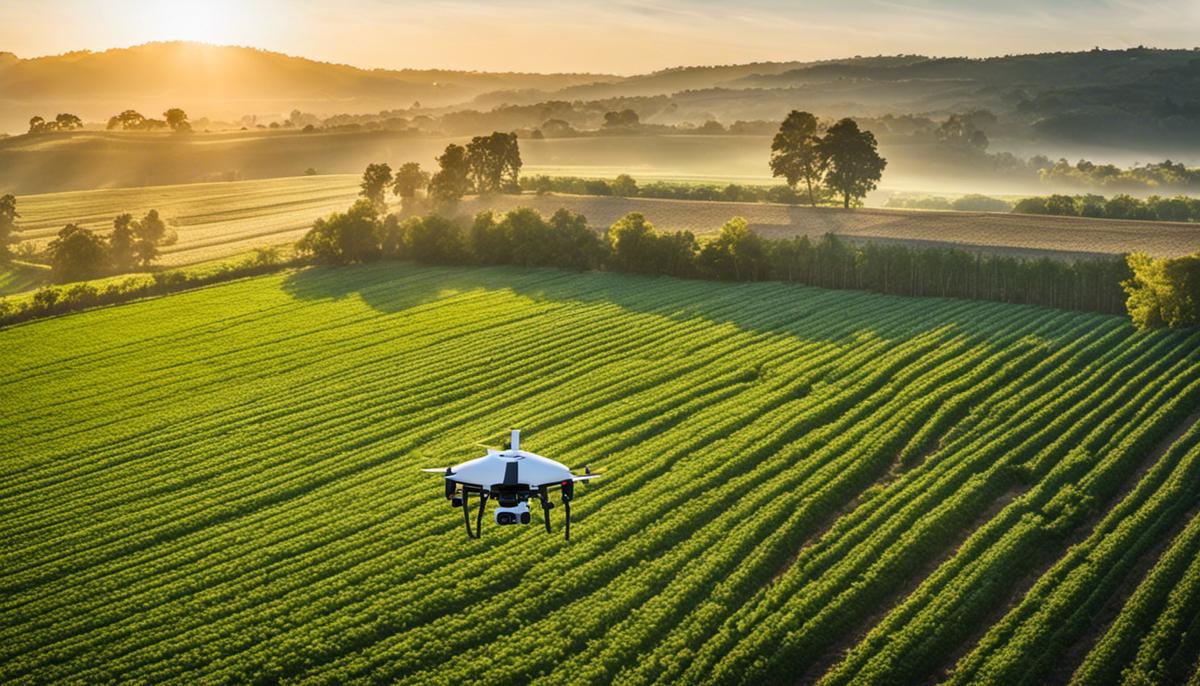
At the horizon of this technological revolution, the possibilities for drone applications in agriculture are vast and promising. It's foreseeable that as drone and AI technology continue to evolve and mature, their role in agriculture will become even more integral. While challenges such as regulatory compliance and ethical considerations need careful navigation, the industry stands poised to harness these innovative tools for even greater yields, efficiency, and sustainability. Looking forward, we can envision a transformative impact in the agricultural industry, painting a bold new portrait of farming in the future—one where drones are common farmhands, tilling the soil, planting seeds, and harvesting the fruits of a high-tech agricultural revolution.
Drones are considered one of the best means of modern agriculture, and they provide the technology that helps agricultural engineers and farmers to simplify the farming process and get the best support to gain vitality in their crops and determine the necessary data that agriculture needs, and it has become a trend on search engines, so today we bring you Top 5 best drones for modern agriculture, in terms of power, take-off and operating time, speed and all features.
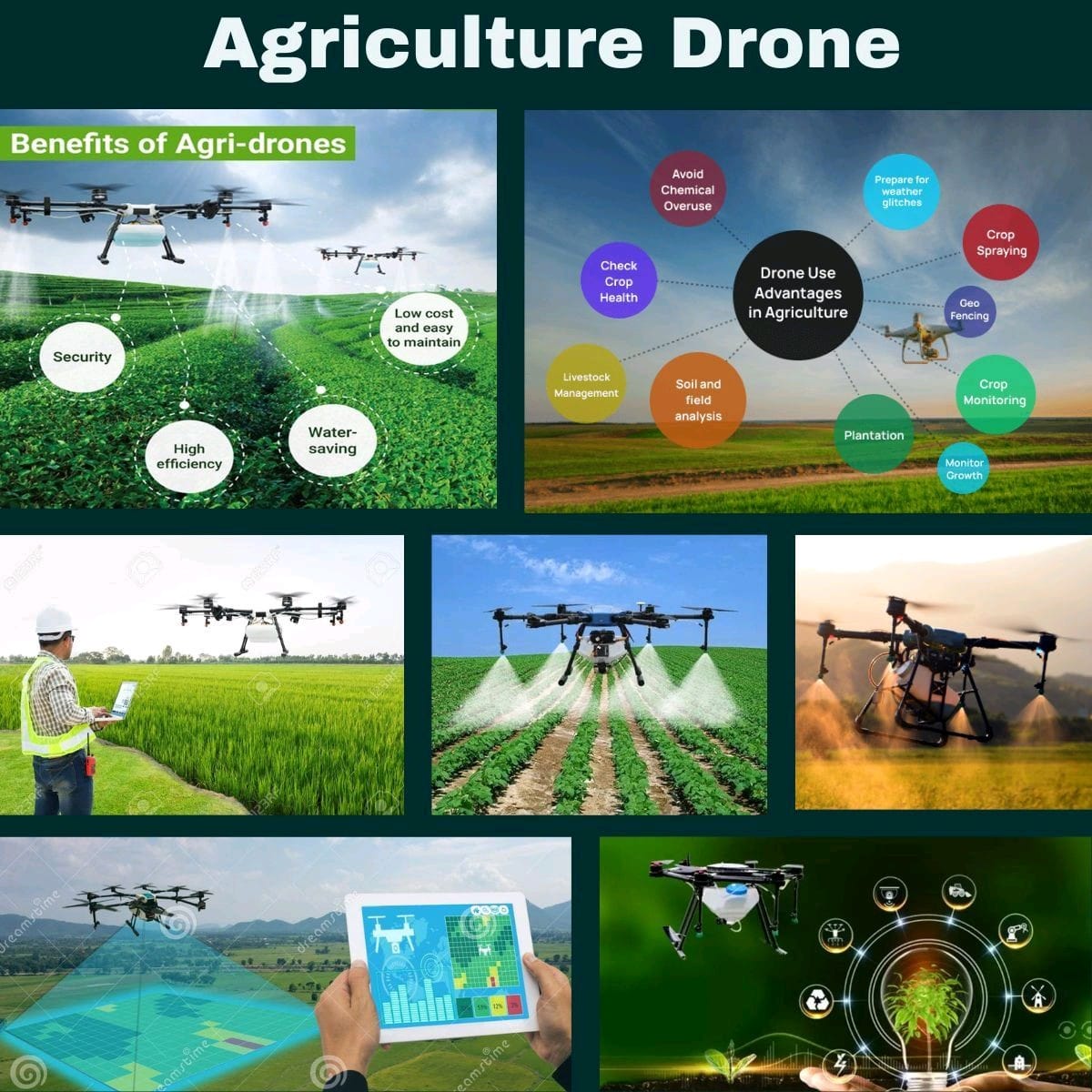
Top 5 best drones for modern farming
Now we show you the 5 best drones for farmers for the year 2022, and it is considered one of the best drones so far
1.DJI Agras MG-1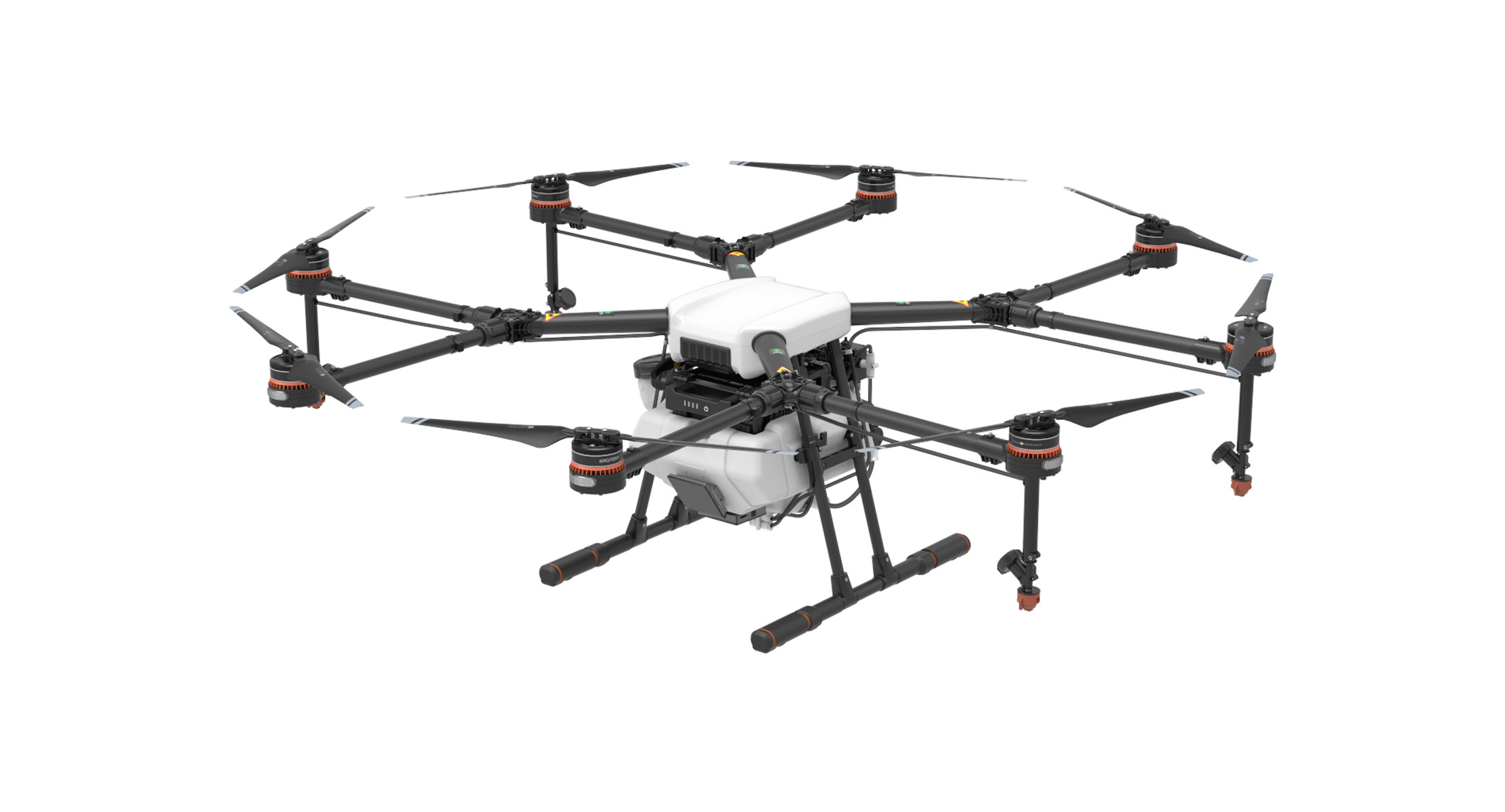
Flight Range: 2 KM
Weight: 1850 g
3.DJI Phantom 4 RTK
Flight time: 30 minutes
Flight Range: 7 KM
Weight: 1391 g
4.DJI Mavic 2 Pro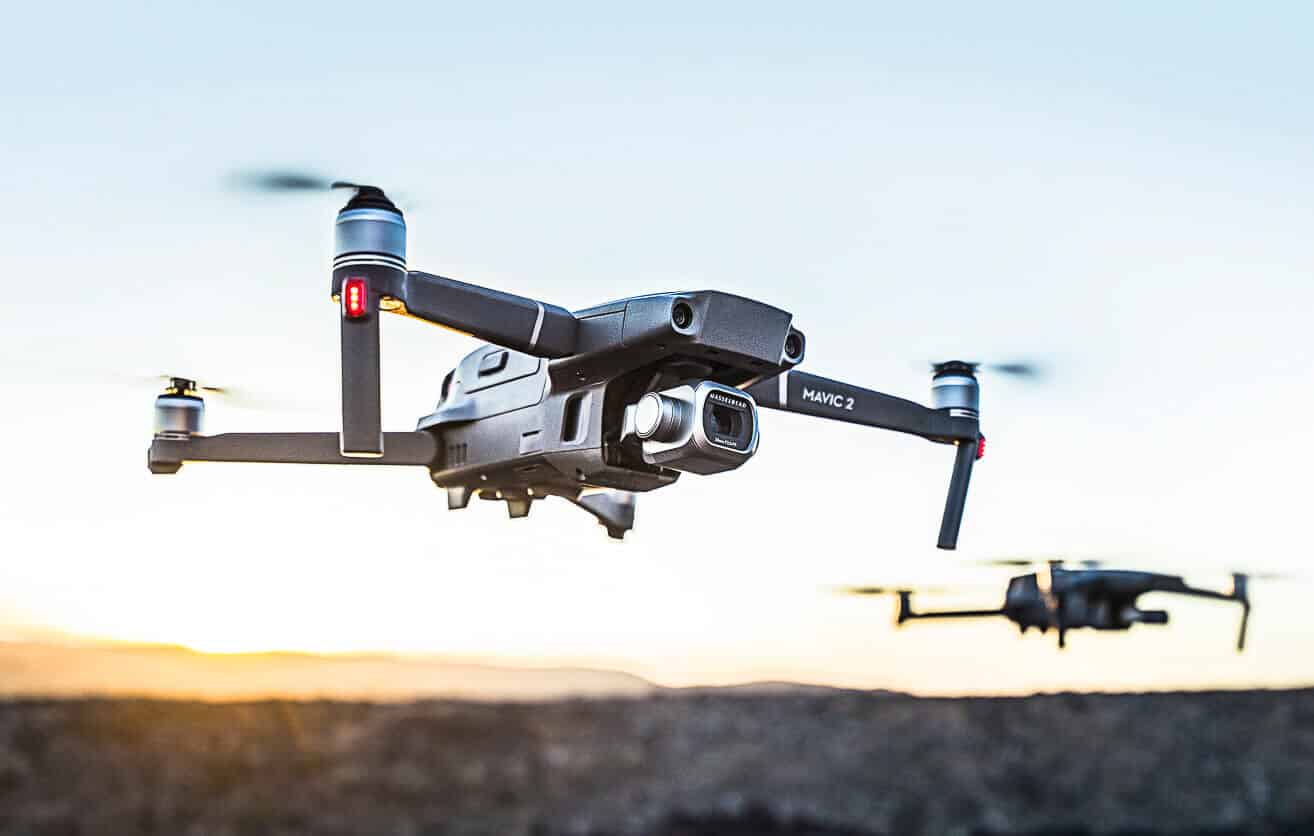
Flight time: 31 min
Flight range: 10000 m
Weight: 907 g
5.DJI Matrice 300 RTK2.Parrot Bluegrass
